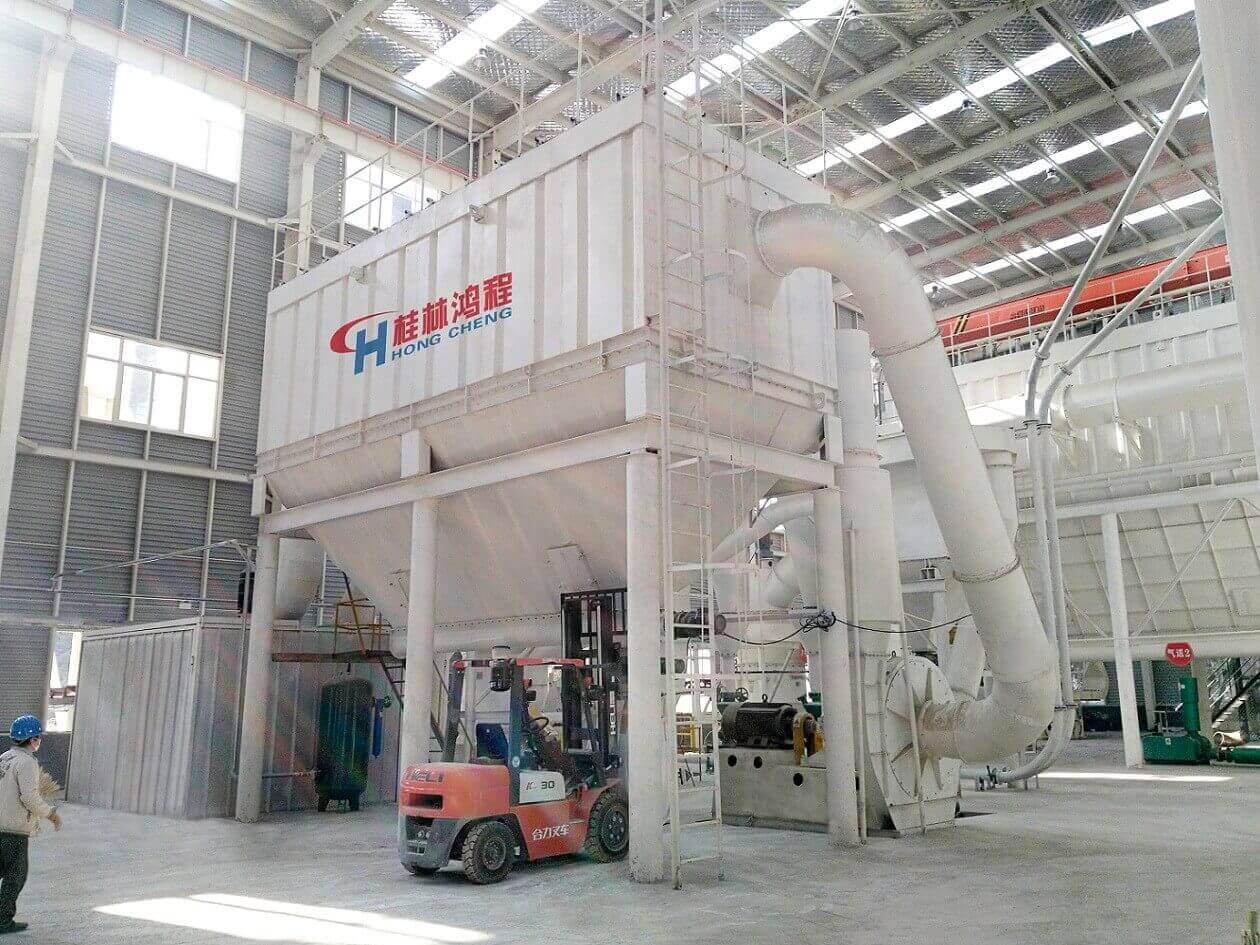How to judge calcite quality? The grade and impurity content of calcite raw ore are one of the important factors affecting the quality index of heavy calcium carbonate products. As a manufacturer of calcite grinding machines, today we will teach you how to judge the quality of calcite.

HCH Calcite Ultra Fine Ring Roller Mill, welcome to leave a message or consult [email protected]
1. CaO content
CaO is the only useful component quality mark of ores. In the paper, coating, plastic, rubber and food industry requirements, it is expressed in terms of CaCO3 (which can be converted from CaO content) content.
2. Whiteness
Whiteness is a physical quality indicator of ore and is related to the color and brightness of finished products.
3. Hydrochloric acid insoluble matter
The main components of hydrochloric acid insoluble matter (A.I.R) include free silica (fSiO2), (aluminum) silicates, iron and manganese oxides and other minerals, which are multi-mineral combination indicators. Among them, minerals such as tremolite, actinolite, diopside, feldspar and garnet in fSiO2 and (aluminum) silicates have high hardness, which affects the quality and processing equipment of heavy calcium carbonate (including heavy calcium carbonate processing). and its application product processing) has a certain impact, but (aluminum) silicates are not common in most ores. Minerals such as sericite, muscovite, talc and kaolinite among (aluminum) silicates have less influence. Therefore, the key to hydrochloric acid insoluble matter is the fSiO2 content, which should be evaluated separately if necessary. Generally, the content should not exceed 0.5%.
4. MgO content
MgO mainly evaluates the dolomite content in the ore. In the papermaking and plastics industries, when the dolomite content is less than 3% (equivalent to MgO ≤ 0.65%), the impact is not significant. In the coating and rubber industry, this requirement can be relaxed to 6% (equivalent to MgO ≤ 1.3%). MgO from talc and serpentine is generally considered to have little impact.
5. SiO2 content
SiO2, various ore tests show that it mainly comes from fSiO2, aluminum silicate and silicate minerals. Among them, the silicate mineral is mainly wollastonite, which has a certain difference in hardness from calcite and has an impact on the uniformity of product particle size.
6. Al2O3 content
Al2O3 mainly comes from aluminosilicate minerals and is one of the main components of hydrochloric acid insoluble matter. The allowable value should not be greater than the limit value of hydrochloric acid insoluble matter. Understanding the content of Al2O3 helps analyze the mineral composition of hydrochloric acid-insoluble matter.
7. Fe2O3 content
Fe2O3 is a color-causing component, and its content has an impact on product color. According to industry experience, Fe2O3 ≤ 0.3% has no significant impact, and Fe2O3 ≤ 0.1% has almost no impact. Fe2+ exists in a variety of minerals. If there is a price change during processing or utilization, attention needs to be paid to its impact.
8. MnO content
MnO in calcite ore mainly comes from manganese oxides, carbonate minerals and silicate minerals. MnO affects whiteness. There are no requirements for manganese in the current industry standards. In previous indicators, rubber industry applications required control of its content. It is generally believed that as long as the calcite ore reaches the whiteness requirement, it will have no impact on the product. However, Mn is a price-changing element, and coloring changes may occur due to price changes during processing.
9. Hazardous substance content
Heavy metals, barium, fluorine, arsenic, free base, (alkali metal + magnesium), sulfur and other indicators. If used as food additives, toothpaste and food packaging paper, or used as fillers in rubber products, plastics and coatings that have an impact on health, these indicators need to be evaluated.
10. Dark foreign matter content
The content and particle size of dark foreign matter have a certain impact on whiteness. Under the existing conditions, it is recommended to conduct qualitative statistics on the content and particles of dark foreign matter to evaluate whether it is suitable for ultra-fine processing. When the dark foreign matter content of heavy calcium carbonate used in the paper industry exceeds a certain level, it should be used as an evaluation index. It is generally required that there should be no more than 5 dark foreign particles per gram of sample.
11. Yellowness and transparency
The currently measured whiteness, also called blue light whiteness, is actually the brightness of the material and cannot well reflect the color difference of the material. Therefore, heavy calcium carbonate for papermaking needs to be evaluated for yellowness and transparency. The paper industry hopes for low yellowness, low transparency, and good hiding. Calcite with high whiteness tends to have good transparency.
How to judge calcite quality? The above are various indicators for judging the quality of calcite. If you also have calcite ore processing needs, want to know the quality of calcite, or need to purchase calcite grinding mill, please leave us a message for details.